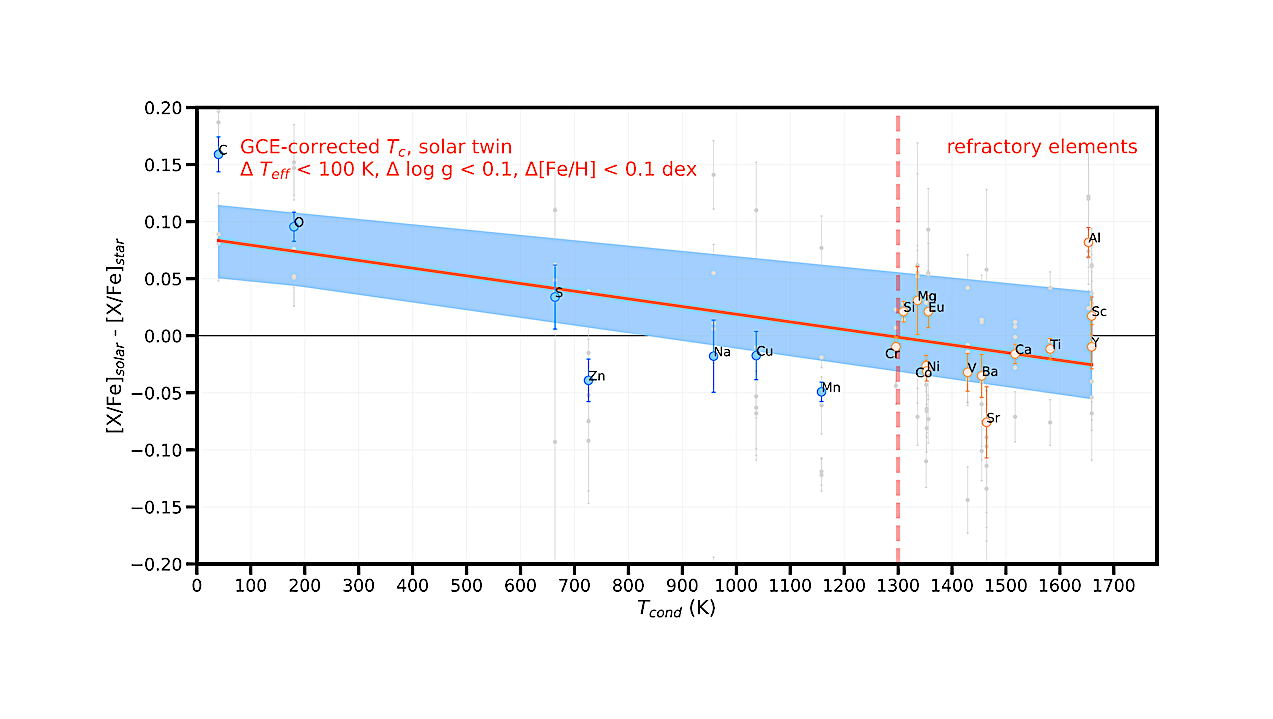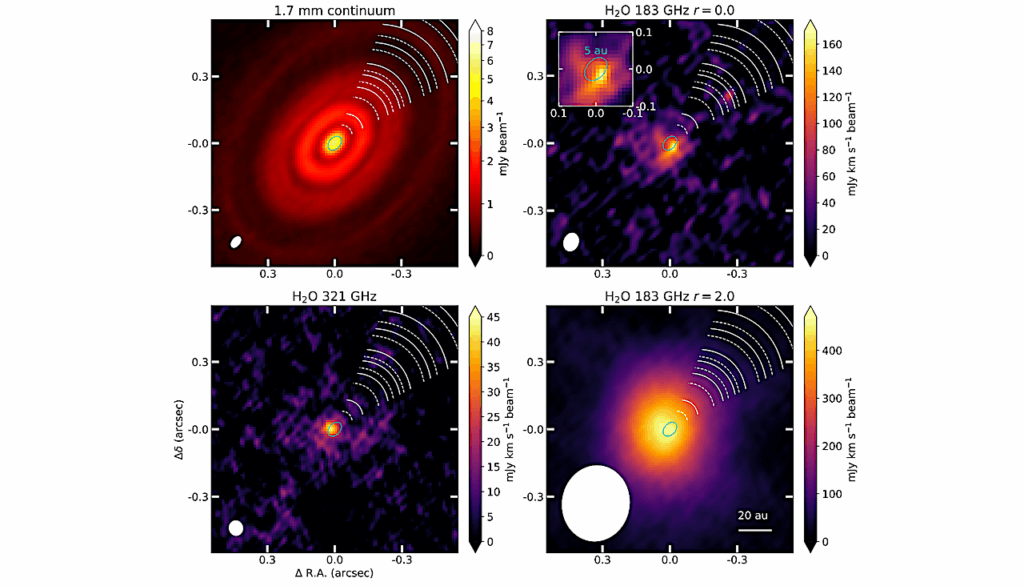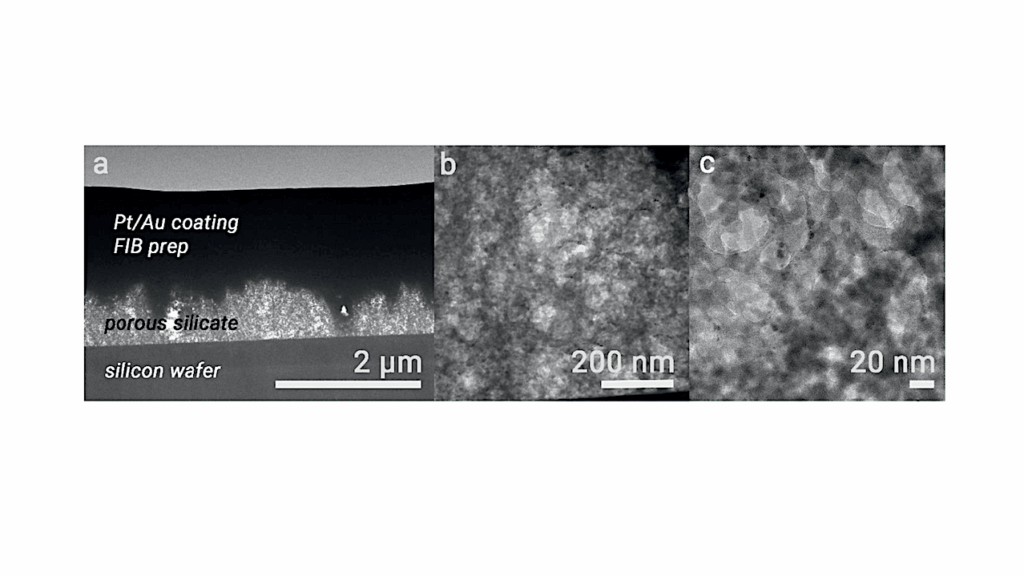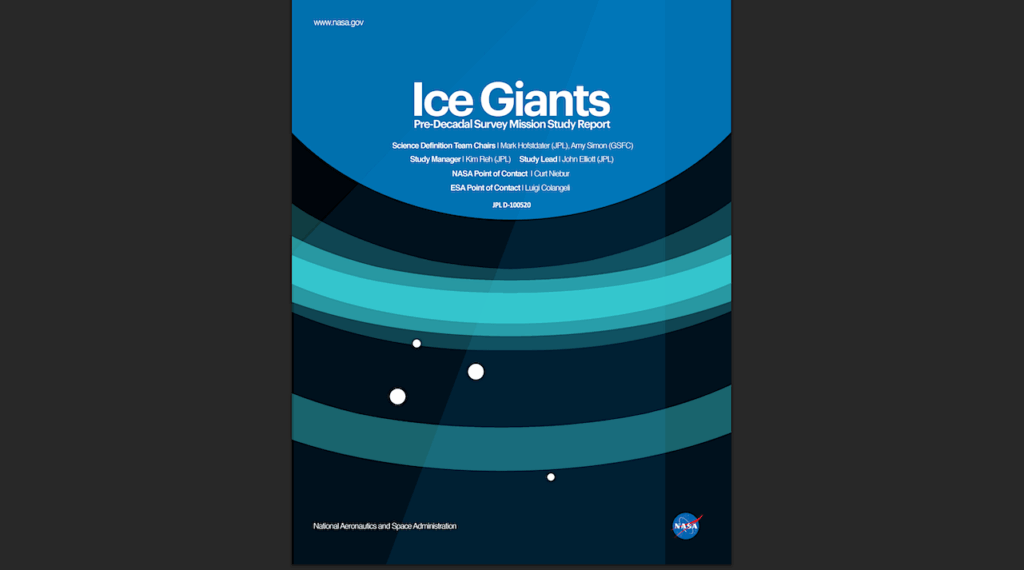High Precision Stellar Chemical Abundance for 17 Planet-hosting Stars and the Condensation Temperature Trend

The Sun is depleted in refractory elements compared to nearby solar twins, which may be linked to the formation of giant or terrestrial planets.
Here we present high-resolution, high signal-to-noise spectroscopic data for 17 solar-like stars hosting planets, obtained with Magellan II/MIKE, to investigate whether this depletion is related to planet formation.
We derive stellar parameters, including stellar atmosphere, age, radius, mass, and chemical abundances for 22 elements from carbon to europium through line-by-line differential analysis. Our uncertainties range from 0.01 dex for Fe and Si to 0.08 dex for Sr, Y, and Eu. By comparing the solar abundances to those of the 17 stars, we investigate the differential abundance ([X/Fe]solar – [X/Fe]star) versus condensation temperature (Tc) trend. In particular, we apply Galactic chemical evolution corrections to five solar twins within the full sample.
Our results conform to previous studies that the Sun is relatively depleted in refractory compared to volatile elements. For both five solar twins and the rest of solar-like stars, we find that all stars hosting known gas giant planets exhibit negative Tc trend slopes, suggesting that the Sun is relatively depleted in refractory elements compared to similar giant-planet-host stars.
Additionally, we find no correlation between Tc trend slopes and the total mass of detected terrestrial planets in each system, suggesting that terrestrial planet formation may not be the cause of refractory element depletion in the Sun.
Planets Around Solar Twins/Analogs (PASTA) I.: High Precision Stellar Chemical Abundance for 17 Planet-hosting Stars and the Condensation Temperature Trend
Qinghui Sun, Sharon Xuesong Wang, Tianjun Gan, Chenyang Ji, Zitao Lin, Yuan-Sen Ting, Johanna Teske, Haining Li, Fan Liu, Xinyan Hua, Jiaxin Tang, Jie Yu, Jiayue Zhang, Mariona Badenas-Agusti, Andrew Vanderburg, George R. Ricker, Roland Vanderspek, David W. Latham, Sara Seager, Jon M. Jenkins, Richard P. Schwarz, Tristan Guillot, Thiam-Guan Tan, Dennis M. Conti, Kevin I. Collins, Gregor Srdoc, Chris Stockdale, Olga Suarez, Roberto Zambelli, Don Radford, Khalid Barkaoui, Phil Evans, Allyson Bieryla
Comments: 26 pages, 10 figures, 7 tables; accepted for publication in ApJ
Subjects: Solar and Stellar Astrophysics (astro-ph.SR); Earth and Planetary Astrophysics (astro-ph.EP)
Cite as: arXiv:2411.13825 [astro-ph.SR] (or arXiv:2411.13825v1 [astro-ph.SR] for this version)
https://doi.org/10.48550/arXiv.2411.13825
Focus to learn more
Submission history
From: Qinghui Sun
[v1] Thu, 21 Nov 2024 04:12:16 UTC (2,082 KB)
https://arxiv.org/abs/2411.13825
Astrobiology, Astrochemistry, #StellarCartography








